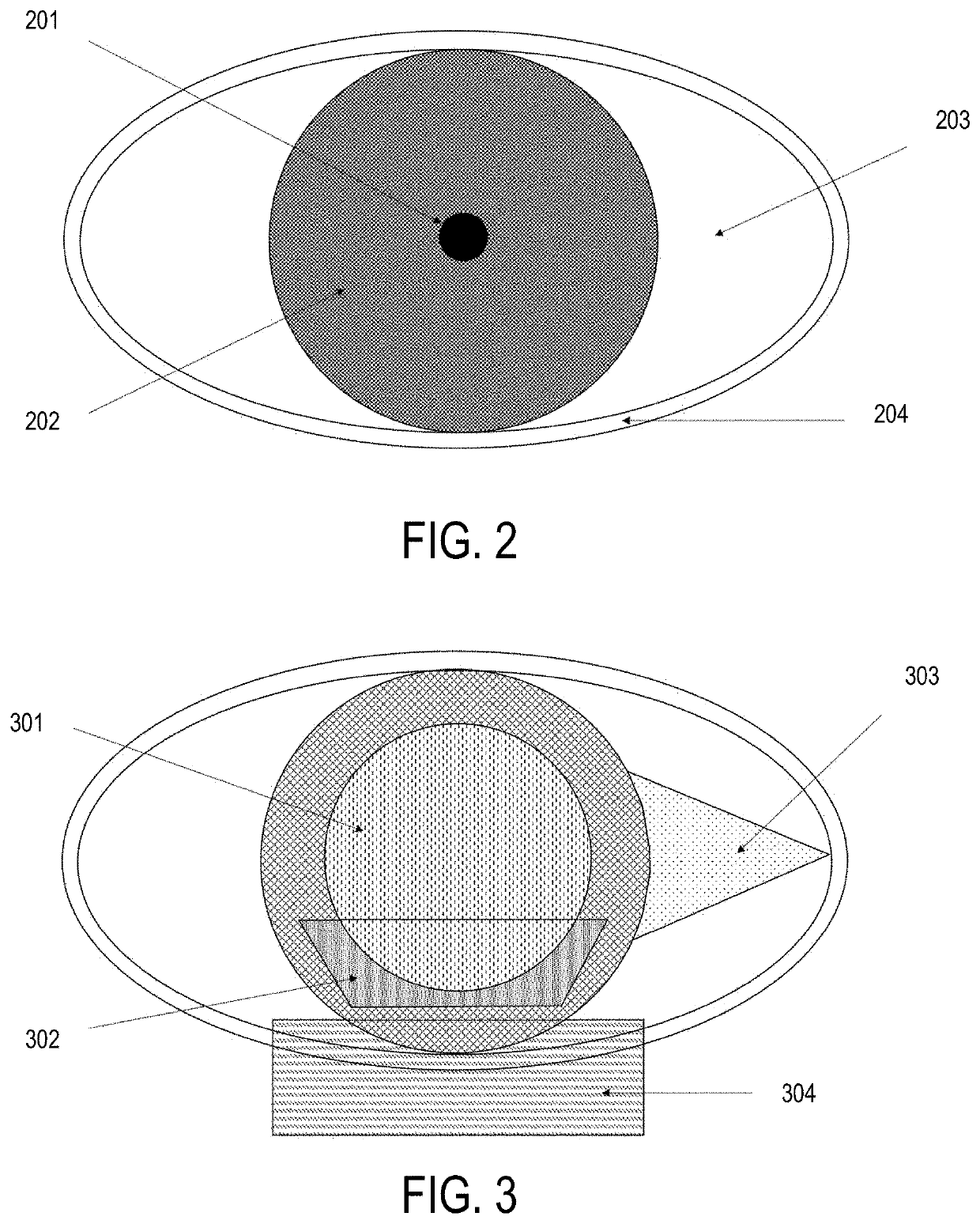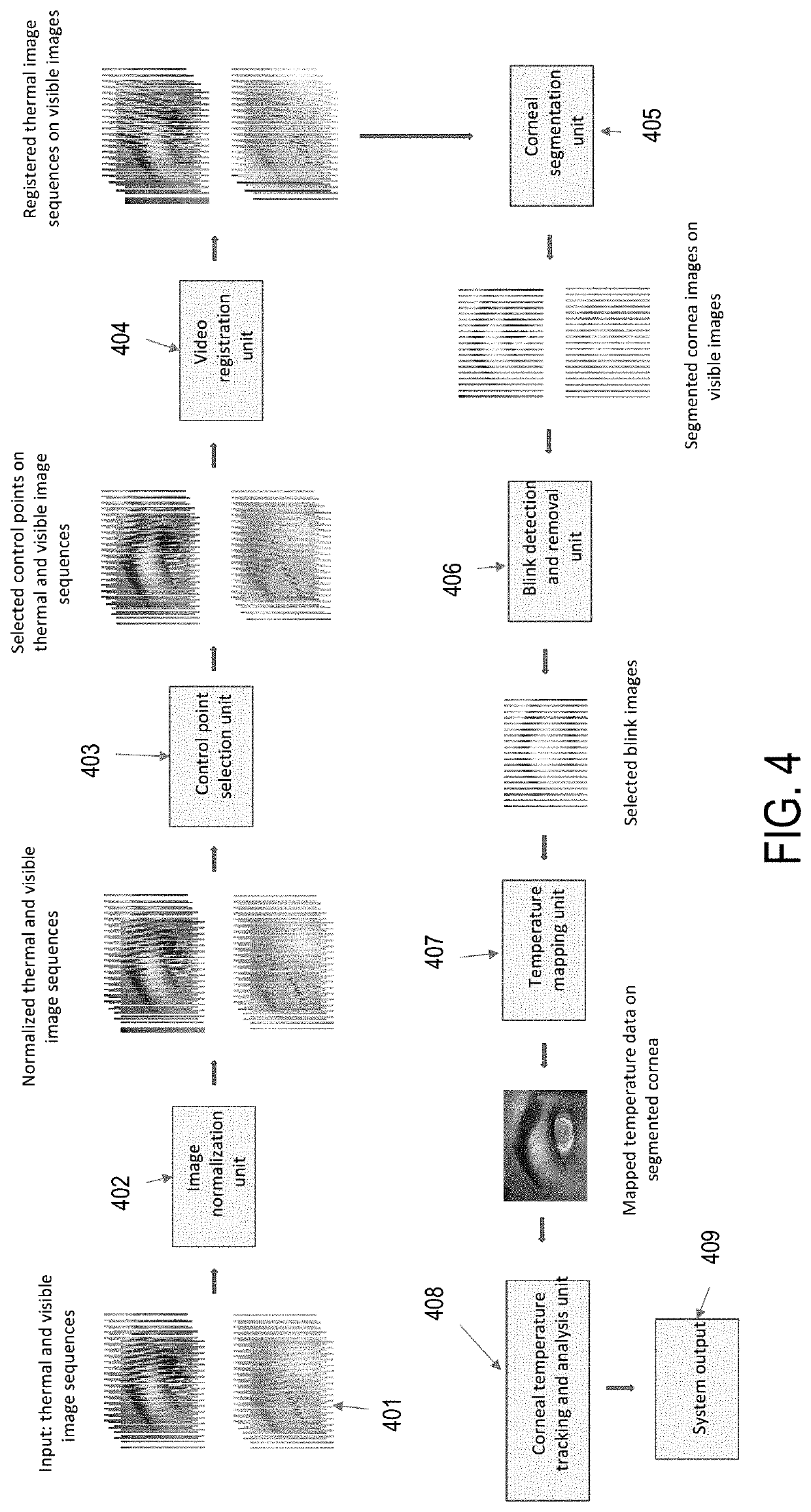System and method for imaging, segmentation, temporal and spatial tracking, and analysis of visible and infrared images of ocular surface and eye adnexa
a technology of visible and infrared images and system and methods, applied in image data processing, image enhancement, medical science, etc., can solve the problems of inability to segment images, inability to track eye movements, and lack of resolution
- Summary
- Abstract
- Description
- Claims
- Application Information
AI Technical Summary
Benefits of technology
Problems solved by technology
Method used
Image
Examples
Embodiment Construction
[0038]As noted above, the present disclosure relates to a system and method for imaging and analysis of ocular disease and studies of the eye. More generally, the present system and method provides an improved system and method for automatically and non-invasively imaging the ocular surface and adnexa tissues using infrared (IR) thermal cameras and visible light cameras synchronously. In an embodiment, the present system and method segments the images produced to identify specific ocular structures and measures ocular surface temperature (OST) within segmented areas by tracking the OST precisely, including by monitoring eye tracking and eye blinking during measurement to remove artefacts and maintain synchronicity. Temporal and spatial changes in the IR and visible images are tracked over time, and diagnostic indicators for ocular disease diagnosis and study of the eye are produced.
[0039]A key requirement for ocular surface thermography is the ability to locate the corneal area in t...
PUM
 Login to View More
Login to View More Abstract
Description
Claims
Application Information
 Login to View More
Login to View More - R&D
- Intellectual Property
- Life Sciences
- Materials
- Tech Scout
- Unparalleled Data Quality
- Higher Quality Content
- 60% Fewer Hallucinations
Browse by: Latest US Patents, China's latest patents, Technical Efficacy Thesaurus, Application Domain, Technology Topic, Popular Technical Reports.
© 2025 PatSnap. All rights reserved.Legal|Privacy policy|Modern Slavery Act Transparency Statement|Sitemap|About US| Contact US: help@patsnap.com



